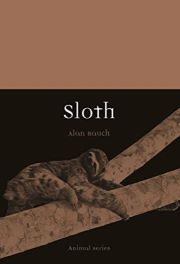Sloth

Alan Rauch
Reaktion Books, £13.95
In another life I would have spent my time looking up into the trees in South America waiting for a sloth to come down the trunk to defecate, once every six days or so. It was not to be, but the sloth has always held a dear place in my heart. This is obviously also the case for many folk as the animal has cropped up in literature, film, song and art for centuries, since it was first brought into the consciousness of western society.
Alan Rauch is a professor of English, and that shows, as the majority of the book covers the depiction of sloths (including the now extinct giant ground sloths) in art and literature. As Rauch describes, much of this is because of the relationship between the animal with the adjective sloth, meaning reluctance to work or make an effort; laziness. Such a description, and the sinfulness associated with it, can hardly be attributed to an animal that is going about its everyday life adapted to the environment in which it lives. But that hasn’t stopped people from making hay with the commonality of the words.
This short book describes the anatomy, physiology, behaviour and ecology of the six species of three- and two-toed sloths that currently survive in Central and South America, including the pygmy sloth, which is critically endangered in the wild. It also looks at the conservation and eco-awareness of sloths.
While the sloth has generated many memes (think Sid the Sloth in the Ice Age movie series), there is still much we don’t know about the species in the wild and their roles in the ecosystems they inhabit.
I recommend this book to anyone interested in these fascinating creatures and the part they play in our lives, even if, as Rauch shows, fiction is a long way from fact.
Professor Iain Gordon FRSB
Reviewed by Professor Iain Gordon FRSB, Honorary Professor at the Fenner School of Environment & Society, The Australian National University


